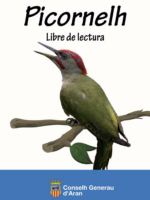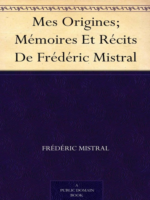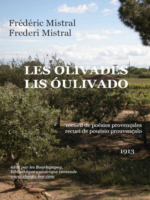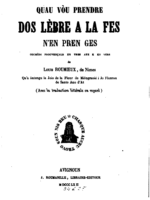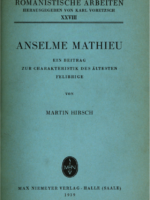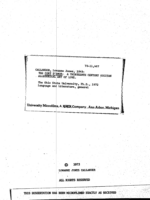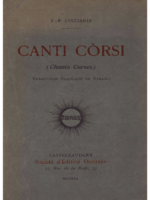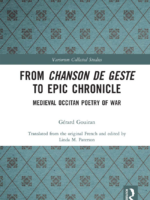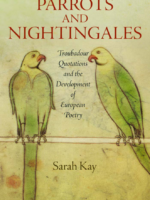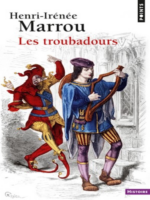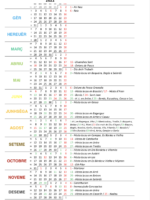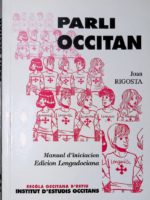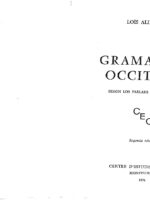Recommended Books
-
Picornelh
0,00 €Aguesta compilacion de trebalhs premiadi en Concors Literari Mossen Condò e en Concors de Diboish der an 2014, dempús de mès de quaranta ans d’auer començat a escríuer damb ua illusion enorma!
-
-
The “Cort d’Amor”: A Thirteenth Century Occitan Allegorical Art of Love
0,00 €With the exception of the romance of Flamenca, and to a lesser extent, the Arthurian romance of Jaufre. the medieval Occitan narrative poems of the thirteenth century have attracted very little scholarly attention, and among the shorter novas, only one, the Castla-gllos by Raimon Vidal, has been published recently. No full length study of Occitan allegory has yet appeared, al though one scholar,. Marc-RenS Jung, did devote one chap te r to th is topic in a broad survey of the medieval allegorical poem: Etudes sur le poeme allégorlque en France au rao.yen age. Unfortunately, nearly all studies of medieval allegory that have appeared In the last two decades take one or another of the great epic allegories like The Romance of the Rose. The Divine Comedy, or The Canterbury Tales, as. either point of departure or point of arrival, and as a result, the ensuing source studies or definitions are inevitably distorted by the magnetic field that such masterpieces ordinarily deploy. This tendency is particularly disappointing (in view of the fact that the Occitan allegories are, for the most part, earlier than the Romance of the Rose of Guillaume de Lorris, the first of these epic allegories. For this reason, if for no other, they deserve to be considered for and .by themselves.
-
From Chanson de Geste to Epic Chronicle: Medieval Occitan Poetry of War
0,00 €In this collection of essays Gérard Gouiran, one of the world’s leading and much- loved scholars of medieval Occitan literature, examines this literature from a primarily historical perspective. Through texts offering hitherto unexplored insights into the history and culture of medieval Europe, he studies topics such as the representation of alterity through female figures and Saracens in opposition to the ideal of the Christian knight; the ways in which the narrating of history can become resistance and propaganda discourse in the clash between the Catholic Church and the French on the one hand and the Cathar heretics and the people of Occitania on the other; questions of intertextuality and intercultural relations; cultural representations fashioning the West in contact with the East; and Christian dissidence in the twelfth and thirteenth centuries. Written in an approachable style, the book will be of historical, literary and philological interest to scholars and students, as well as any reader curious about this hitherto little-known Occitan literature.
Gérard Gouiran was born in 1945 at Le Rove, which was then a small village close to Marseille. His parents often spoke Occitan between themselves but avoided doing so with their children for fear of damaging their education. It was only after studying classics in Marseille and then Paris that Professor Gouiran rediscovered the Occitan language, and from then on he has devoted himself to medieval literature. Best known for his magisterial edition of the troubadour Bertran de Born, he has written – and spoken – widely on troubadour lyric, epic and romance.
Linda M. Paterson taught at Northeastern University, Boston, USA, for two years before moving to the University of Warwick, UK, in 1971, where she is now Professor Emerita. Her books include Troubadours and Eloquence (1975); The World of the Troubadours: Medieval Occitan Society, c.1100–c.1250 (1993); Culture and Society in Medieval Occitania (2011); and Singing the Crusades: French and Occitan Lyric Responses to the Crusading Movement, 1137–1336 (2018).
-
Parrots and nightingales : troubadour quotations and the development of Europea poetra
0,00 €The love songs of Occitan troubadours inspired a rich body of courtly lyric by poets working in neighboring languages. For Sarah Kay, these poets were nightingales, composing verse that is recognizable yet original. But troubadour poetry also circulated across Europe in a form that is less well known but was more transformative. Writers outside Occitania quoted troubadour songs word for word in their original language, then commented upon these excerpts as linguistic or poetic examples, as guides to conduct, and even as sources of theological insight. If troubadours and their poetic imitators were nightingales, these quotation artists were parrots, and their practices of excerption and repetition brought about changes in poetic subjectivity that would deeply affect the European canon.
The first sustained study of the medieval tradition of troubadour quotation, Parrots and Nightingales examines texts produced along the arc of the northern Mediterranean—from Catalonia through southern France to northern Italy—through the thirteenth century and the first half of the fourteenth. Featuring extensive appendices of over a thousand troubadour passages that have been quoted or anthologized, Parrots and Nightingales traces how quotations influenced the works of grammarians, short story writers, biographers, encyclopedists, and not least, other poets including Dante and Petrarch. Kay explores the instability and fluidity of medieval textuality, revealing how the art of quotation affected the transmission of knowledge and transformed perceptions of desire from the “courtly love” of the Middle Ages to the more learned formulations that emerged in the Renaissance. Parrots and Nightingales deftly restores the medieval tradition of lyric quotation to visibility, persuasively arguing for its originality and influence as a literary strategy.
-
Songs of the Women Trouvères
0,00 €We bring together here the songs of all medieval women whose names are recorded in the rubrics or tables of contents of various Old French manuscripts as composers of songs or as participants in jeux-partis and tensons (debate poems). The songs by women whose names are known are relatively few in number, but there were undoubtedly many more women composers, and whereas their names are lost to us, some of their songs are probably still extant, though bereft of proper attribution. Accordingly, we have chosen to include a generous sampling of anonymous works—chansons de femme (women’s songs), rondeaux, and motets—both because they offer a wide variety of female voices and because some of these pieces may well have been composed by women. We hope in this way to rectify a situation that for many years has denied women their rightful place in the pantheon of Old French medieval lyric poets.
For, as surprising as it may seem, the very title of our anthology, Songs of the Women Trouvères, makes a bold, even controversial, statement. Although nearly all scholars now acknowledge the existence of medieval women who composed poetry in other romance languages (Occitan, Spanish, Italian, Galician- Portuguese), most have accepted without question Pierre Bec’s contention that none of the songs composed in northern France in the twelfth or thirteenth centuries are the product of a woman trouvère (Bec 1979: 236). A number of Old French songs feature women’s voices ( féminité textuelle), particularly in the lyric type known as the chanson de femme. However, féminité textuelle does not necessarily imply female authorship (féminité génétique), to use a distinction introduced by Bec himself (1979: 235–36). The majority of these songs are anonymous, but because most of the ones that are attributed in the manuscripts are credited to a male author, Bec has concluded that no Old French songs of the period in question were composed by women. Although many have agreed with Bec, the literary history of the past 125 years includes a few dissenters who base their opinion on evidence that until recently was either ignored or not seriously considered. A brief summary of that history is instructive, as it highlights the major arguments for and against the historical existence of the women trouvères.
-
Les Troubadours
0,00 €Il serait temps de nous défaire enfin de ce poncif du troubadour errant, la guitare au côté, égayant de ses ballades les longs loisirs des tristes châteaux gothiques. C’est à cette image conventionnelle et fade que Henri-Irénée Marrou entend substituer la véritable identité et histoire des troubadours, en analysant plus généralement la “renaissance” du XIIe siècle.C’est à cette époque, en pays d’Oc, que les troubadours ont inventé l’amour, le mot comme la chose. C’est l’idéal quasi mystique de l’amour courtois qu’ils célèbrent dans leurs chansons, amour humain bien réel qui se trouve cependant presque élevé à la dignité d’un culte.La première édition de cet ouvrage date de 1961.Henri-Irénéee Marrou (1904-1977) est un des grands historiens de l’Antiquité tardive, spécialiste d’Augustin et de l’augustinisme ; a notamment publié au Seuil, L’Eglise de l’Antiquité tardive (1985) et Saint Augustin et l’augustinisme (2003).
-
Les troubadours. Une histoire poétique
0,00 €Les troubadours sont, au XIIe siècle, les auteurs, immensément admirés, des plus anciennes chansons d’amour composées dans une des langues nouvelles de l’Europe, la langue d’oc. Le tremblement du désir et celui de la crainte, la ferveur et la frustration, la jalousie et la jouissance, tout cela ils l’ont dit de façon si nouvelle et si intense que leurs chansons résonnent encore dans les mots d’amour d’aujourd’hui. Le beau livre de Michel Zink rend sa fraîcheur à cette poésie vieille de neuf siècles en la suivant dans ses méandres, en disant au fil des poèmes, qu’il cite en grand nombre, juste ce qu’il faut pour qu’elle nous parle, pour qu’elle nous enchante et pour qu’elle vive en nous.

